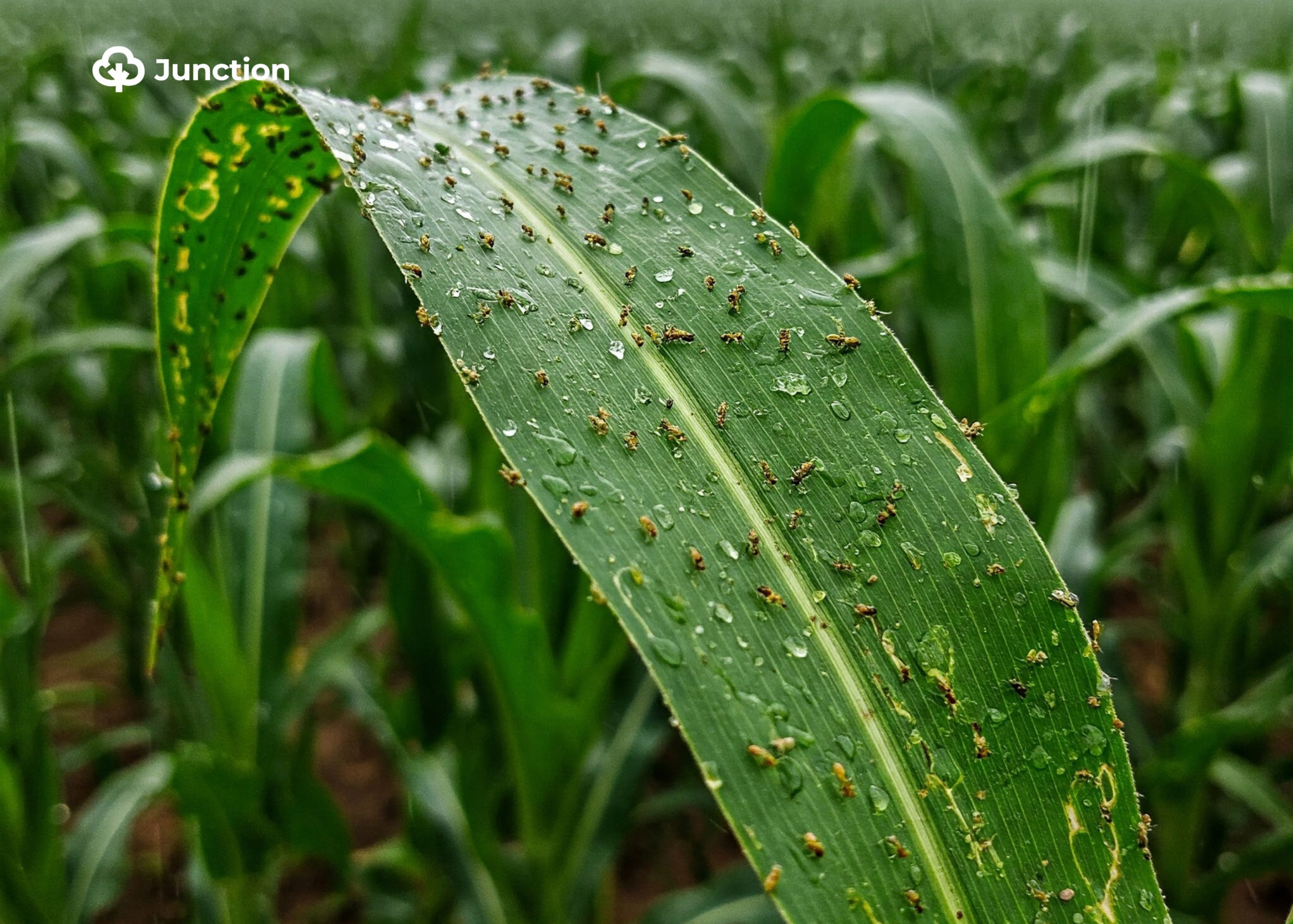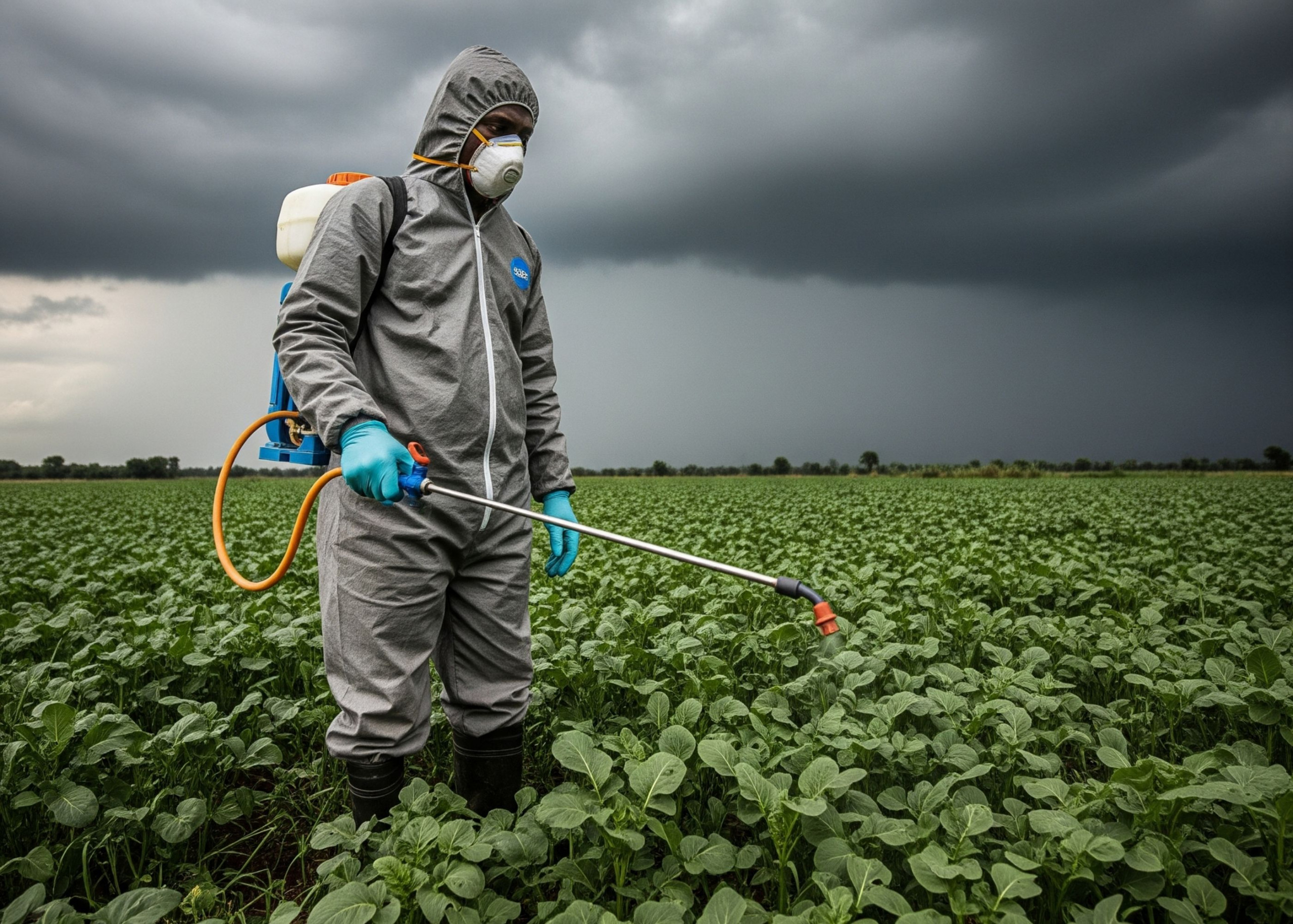The rainy season is already here, in its full force. The relevant weather and early flood warning agencies have warned of heavy rainfall and floods in several parts of the country.
Farmers are advised on how to maximise the rainy season for their farming practices, noting ways to reduce the risk of damage to their farm and farm produce by flood.
However, aside from the apparent flood problem consistent with rainy seasons, which causes crop destruction and soil degradation, pest and disease problems are another source of worry for farmers during the rainy season.
Pests and disease outbreaks are a huge threat to the existence of crops and livestock farms, as a single pest or disease outbreak can wipe out between 18% to 75% of crops or livestock. The humid weather and wet environment in the rainy season serve as the ideal breeding ground for some pests and diseases.
Tomato farmers in Nigeria are currently battling the Tuta Absoluta pest, just as Ginger farmers in the country lost most of their harvest last year to a fungal outbreak. The loss of these farmers runs into billions of naira, threatening their livelihood and the continuation of their farming business.
In this article, we highlighted some common farm pests in the rainy season and how farmers can fight them.
Common crop pests during the rainy season in Nigeria
Profitable farm businesses like yam, maize, sesame, cassava and soybean all have their pest and disease problems, and farmers in Nigeria have dealt with different scales of their outbreaks. While some are generally present all season, some pests are more active or reproduce more due to the influence of the rainy season. Some of these pests are.
1. Fall Armyworm:
Fall Armyworm (FAW) is a migratory pest that thrives in warm, humid conditions with moderate rainfall, making it a particularly problematic pest during the rainy season. FAW populations increase rapidly in rainy seasons, causing huge crop damage on farms. FAW recently became one of the most important pests of maize cultivation after it suddenly appeared in Africa in 2016 and spread rapidly. A new study published in Agriculture, Ecosystems & Environment predicts that this pest could have a significant impact on maize cultivation in Nigeria in the coming decades. Its larvae chew on crop leaves, creating ragged holes and damaging the plant’s ability to photosynthesise. In maize, especially, they target the whorls, silks and ears affecting grain development and quality yield.
How to fight FAW
- Use early-maturing and pest-tolerant varieties
- Hand-pick egg masses and larvae
- Apply biopesticides (e.g., Bacillus thuringiensis) or chemical pesticides responsibly
- Weather forecasting models can also help predict FAW outbreaks and enable farmers to take appropriate measures on time.
2. Maruca Vitrata (Cowpea pod borer):
Maruca vitrata, also known as the legume pod borer, is a significant pest of leguminous crops. Its activity is strongly influenced by the rainy season, as it is particularly active and damaging during the season. The pest invades fields during this period, and its population is usually increased due to increased humidity and suitable temperatures. Cowpea pod borer infestation causes significant crop damage by feeding on flowers and pods, leading to reduced yield, seed deformation, and premature seed drying. The caterpillars bore into the pods, damaging the developing seeds and causing them to shrivel up or abort. This infestation can result in yield losses of up to 80%, threatening the existence of farms and the livelihood of farmers.
How to fight Cowpea pod borer infestation
- Use resistant varieties
- Plant early to escape heavy infestations
- Use Neem extracts or selective insecticides
- Store seeds properly to prevent storage pests
3. Aphids:
Aphids are soft-bodied insects that use their piercing sucking mouthparts to feed on plant sap. They also produce a sticky substance called honeydew, which can lead to sooty mould growth, hindering photosynthesis and deforming leaves and fruits. Additionally, aphids can transmit plant viruses, leading to severe disease and decreased yield. Aphids thrive in humid conditions, which can lead to increased populations during the rainy season. Although mature crops can survive mild aphid infestations, it is a threat to young plants and some sensitive crops. They are common pests for cowpea and Soybean farms. It is also important to note that while the initial increase in humidity might seem to favour aphids, heavy rainfall can reduce their population.
How to fight Aphid infestation on farms
- Adhere to timely planting practices
- Use pest-resistant varieties
- Use biological control agents (predators, parasitoids)
- Apply recommended insecticides if pest levels are high
4. Termites, Beetles and other insects:
Termites, certain beetles, caterpillars and other insects that feed on plant leaves, bark and even stored produce are more abundant and active during the rainy season in Africa. This is because the rainy season provides the necessary moisture and foliage for their growth and reproduction. Termites like the Macrotermes bellicosus (African mound-building termite), Macrotermes Subhyalinus and Trinervitermes oeconomus, and Beetles like Bean Leaf Beetles (Ootheca spp.), Black Maize Beetle (Heteronychus arator), Larger Grain Borer (Prostephanus truncatus), and Greater and Lesser Yam Beetles are more prevalent during the rainy season when food sources are abundant. These pests damage various crops, including maize, beans, yams, cassava, sugarcane, groundnuts, and cocoa, while also damaging farm structures.
How to fight Termites, Beetles and other insect infestations on farms
- Adhere to timely planting practices
- Use pest-resistant varieties
- Use biological control agents (predators, parasitoids)
- Adhere to proper field hygiene and destruction of infested plants
- Apply recommended insecticides if pest levels are high.
5. Nematodes:
Nematodes are microscopic, worm-like pests that usually make up the structure of farming soil. These pests cause significant damage to a wide range of crops in Nigeria, especially during the rainy season when soil moisture is high and conditions are ideal for their activity. There are several kinds of nematodes, but the most problematic for farmers in Nigeria are plant-parasitic nematodes such as root-knot nematodes (Meloidogyne spp.), root-lesion nematodes (Pratylenchus spp.), reniform nematodes (Rotylenchulus spp.), and spiral nematodes (Helicotylenchus spp.). They attack crops like yam, cassava, maize, cowpea, soybean, rice, and vegetables, cutting off nutrient sources and causing poor and stunted plant growth. Root-knot nematodes cause characteristic galls or knots on roots, leading to stunted growth, yellowing, and poor yield. Root-lesion nematodes invade and damage root tissues, resulting in patches of poor plant growth and leaf curling, especially under drought stress. Reniform nematodes reduce plant vigour and yield by feeding on the root surface, while spiral nematodes, including the yam nematode (Scutellonema bradys), can cause lesions on yam tubers that often lead to secondary infections and tuber rot.
How to manage nematode problems on farms:
- Practice crop rotation with non-host or resistant crops
- Use nematode-resistant crop varieties
- Apply organic amendments or botanicals
- Employ proper land management, such as bush fallow and mulching
- Use nematicides judiciously where appropriate
6. Stem Borers:
Stem borers, including species such as the maize stalk borer (Busseola fusca), pink stem borer (Sesamia calamistis), and sugarcane stalk borer (Eldana saccharina), are major pests of cereal crops like maize, rice, and sugarcane in Nigeria, particularly during the rainy season when their populations peak. These pests lay eggs on crop stems, and the emerging larvae bore into the stems, disrupting the flow of nutrients and water. This boring activity weakens the plant, causes “windowing” (rows of holes in leaves), and increases susceptibility to lodging (falling over), which can severely reduce yield and grain quality. Infestations are often most severe towards the end of the rainy season, and affected fields may show patches of stunted, yellowing, or collapsed plants[2].
How to control stem borers on farms
- Plant early to avoid peak pest periods
- Use resistant crop varieties
- Remove and destroy crop residues after harvest
- Apply targeted insecticides if necessary
By understanding and managing these common rainy season pests, Nigerian farmers can better protect their crops and improve yields, especially in rainy seasons.



